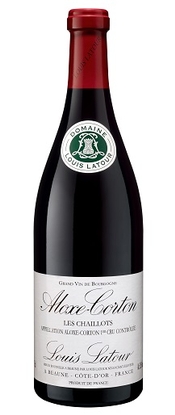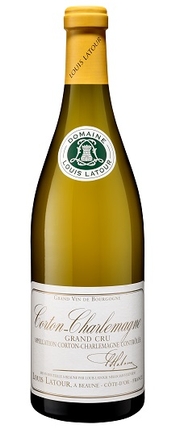My friend and colleague at
Wine Review Online Michael Apstein is, I know, writing about the 2020 vintage in Burgundy, and, specifically, about the 2020 wines from Maison Louis Latour, so I thought it might be useful for me to weigh-in on two near-mature vintages of the Latour wines.
Two Thousand Nine and Two Thousand Ten turned out to be one of the great twin vintages in the vinous history of Burgundy, in which, most unusually, the reds and whites proved in both cases to be extremely good, if not outstanding.
I well remember having tasted both reds and whites from 2009 and 2010 when they were young and just coming to market at a series of
Wine & Spirits magazine blind tastings. We all knew by then that ’09 was a great vintage for the reds and a slightly lesser vintage for the whites; and that the ’10 whites were, by almost all accounts, splendid. The great surprise was how good, how very good the reds proved to be in 2010.
The ’09 reds were ripe and succulent and immediately appealing—a real can’t miss vintage. The same ripeness in the ’09 whites meant that they often lacked that extra touch of structure to make them great. The ’10 whites, of course, were obviously structured without being at all lean. They shouted classic white Burgundy! And the Chablis were, sample after sample, impeccable, one better than the next—or very nearly as good. But the ’10 reds were what shocked us all. The definition and clarity in the wines was astonishing. Each was clearly what it was, nearly always a wonderful example of its site and its ranking in the realm of truly Great Burgundies. There was both structure and ripe, but not at all overripe fruit. Elegant reds.
I bought heavily in both vintages in the reds and as much of the ’10 whites as I could. There are, for sure, some very fine ’09 whites, but I wanted the ’10 whites, as many as I could afford—and, as it happened, I bought a lot of Louis Latour wines, beginning with the ’10 whites, but also many bottles of both ’09 and ’10 reds.
I tasted them young, I tasted and drank many of them in their youthful glory; and I’m still working my way through many of the same wines now that they are almost 15 years old. I have very, very seldom been disappointed at any stage. And I absolutely love the contrast between the ’09 and ’10 reds. Oh, and both vintages in red have years left to go in bottle. I’d say the same about the ’10 whites, though I think I’d be a bit more cautious with the ’09 whites.
Here’s a sampling of some of the Latour wines, red and white, 2009 and 2010, that I’ve tasted over the past year. I can recommend every one of these with pleasure:
Reds:
 Aloxe-Corton 1er Cru “Les Chaillots”
Aloxe-Corton 1er Cru “Les Chaillots” (Domaine Louis Latour). My Thanksgiving 2022 wine of the night! One of the best bottles of a wine that I’ve tasted many, many times. Spicy, minty, saline on the nose, with decidedly blackish fruit and earthiness. The usual medium body. Quite dry, the color now darkening just a bit. Nice acids on the nose. An absolutely fabulous match with good Proscuitto di Parma. I’m down to my last couple cases of the 2010, so it brings me both joy and sadness to drink one now.
2009 and 2010 Aloxe-Corton 1er Cru “Les Chaillots” (Domaine Louis Latour). Tasted side by side. The 2010: Iron-tinged on the nose, saline too, with wonderful acidity and definition. Very Pomerol-like, or at least very like some Pomerols, say Clos René, for example, as I remember it from late 1970s vintages. The ’09 is riper, rounder, not nearly so “bright” on the nose, but the same iron-tinged character, though, again, not so clearly defined—the great hallmark of the ’10 being the definition. One night I prefer the ’09, another the ’10. Tonight, it’s the ’10—I think! ]What a treat! One of the great privileges of my wine-loving life: I have had so many of these two, great, underrated wines, I would be ashamed of myself if I were to misidentify either of these tasted blind.
2009 and 2010 “Beaune-Vignes Franches” Premier Cru (Domaine Louis Latour). Tasted side by side. The Latour flagship red wine—or at least one of them, along with the great Corton-Grancey. In any case, it is to Latour as “Clos des Mouches” is to Drouhin and “Clos des Ursules” is to Louis Jadot. And, for that matter, as the Beaune Grèves “l’Enfant Jésus” is to Bouchard. Four really top-flight red Beaune premier crus. And, always, predictably great, well-made wines. Another close run thing, but here I prefer the ’09, though just barely. There’s a ripe juiciness to the ’09 that I find irresistible. Fleshy and fine at the same time. The 2009: An absolutely first-rate wine opened for Easter Sunday dinner. Perfect condition, classic 2009—the Latour style (acid, bright and vibrant, tightly wound) allied with the ripe fruit of the vintage. The 2010: Lighter, perhaps a bit less succulent, and certainly not as ripe. But delicious it was. Would make—and has made at my house!—a fascinating pairing with the 2010 Aloxe “Les Chaillots.”
2009 and 2010 Volnay Premier Cru “En Chevret.” The third of the three great Côte de Beaune premier cru reds regularly on offer from Latour and the only one of the three that is négoce. In this case from a property located in a premier cru Volnay that lies side by side with the famous Caillerets (Bouchard’s own “Ancienne Cuvée Carnot” being the most famous of these). Always an elegant sort of Volnay, not at all Pommardish. The ’10 is especially so, while the ’09 is perhaps just a bit—a small bit—overripe. In this case, I’ve always plumped for the ’10. A very stylish ’10, it could hold its own with a “Caillerets.”
Whites:
 2010 Chablis Premier Cru “Vaillons”
2010 Chablis Premier Cru “Vaillons” (Simonnet-Febvre). From Latour’s sister company in Chablis, a wine I’ve tasted literally dozens of times over the past several years. A near-perfect bottle. One of my last six or so bottles. Light lemon color—after all these years! Light and airy and fine. Saline. Beautifully balanced. Beautiful example of what it is and of the vintage.
2010 Meursault-Blagny Premier Cru (Louis Latour). A light yellow, still very youthful color. A still fresh and youthful nose as well: Airy, light acacia honey nose with a touch of spice. As it’s always been: Really quite lovely.
2010 Corton Charlemagne Grand Cru (Domaine Héritiers Louis Latour). Golden in color. On the way to orange. But the wine itself was neither pre-moxed nor corked nor tired. Weightier—by far—than the premier crus tasted alongside it (including the 2010 Blagny). More honeyed—also, by a long ways. Nuttier. And really 1quite the longest wine on the finish. Color can be deceiving, especially in older, grander whites.
With the 2020 whites looking a replay of the 2010s (though a few seem more 2009ish than all that) and the 2020 reds looking like a cross between the 2009 and 2010 red vintages, this is high praise. I would not hesitate to age either whites—or reds—in 2020. I’ve already gotten great pleasure from good, small domaine “Bourgogne Blanc Côte d’Or” whites and similar Chablis tout court. The past augurs well for the future when it comes to this promising new vintage. Buy what you can find—and what you can afford.
Santé!